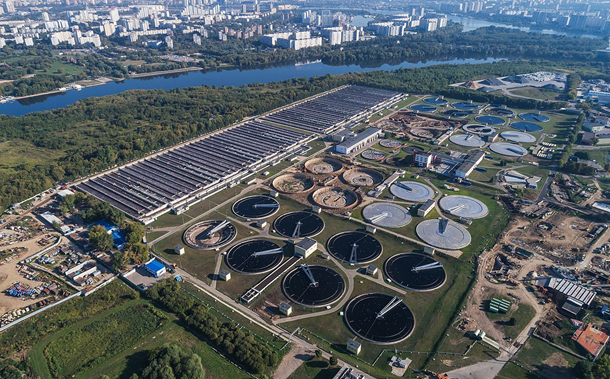An Advanced Adaptive Mesh for Beam-Column Finite Elements on Transient Dynamic Analysis
Downloads
Doi:10.28991/CEJ-2024-010-12-01
Full Text:PDF
Downloads
[2] Dong, Y., Yuan, S., & Xing, Q. (2019). Adaptive finite element analysis with local mesh refinement based on a posteriori error estimate of element energy projection technique. Engineering Computations (Swansea, Wales), 36(6), 2010–2033. doi:10.1108/EC-11-2018-0523.
[3] Eisenträger, S., Atroshchenko, E., & Makvandi, R. (2020). On the condition number of high order finite element methods: Influence of p-refinement and mesh distortion. Computers and Mathematics with Applications, 80(11), 2289–2339. doi:10.1016/j.camwa.2020.05.012.
[4] Wilson, S. G., Eaton, M. D., & Kópházi, J. (2024). Energy-Dependent, Self-Adaptive Mesh h(p)-Refinement of a Constraint-Based Continuous Bubnov-Galerkin Isogeometric Analysis Spatial Discretization of the Multi-Group Neutron Diffusion Equation with Dual-Weighted Residual Error Measures. Journal of Computational and Theoretical Transport, 53(2), 89–152. doi:10.1080/23324309.2024.2313460.
[5] De Domenico, D., Ricciardi, G., & Takewaki, I. (2019). Design strategies of viscous dampers for seismic protection of building structures: A review. Soil Dynamics and Earthquake Engineering, 118, 144–165. doi:10.1016/j.soildyn.2018.12.024.
[6] Sun, B., Zhang, Y., Dai, D., Wang, L., & Ou, J. (2023). Seismic fragility analysis of a large-scale frame structure with local nonlinearities using an efficient reduced-order Newton-Raphson method. Soil Dynamics and Earthquake Engineering, 164. doi:10.1016/j.soildyn.2022.107559.
[7] Chatterjee, T., & Chowdhury, R. (2018). H–P Adaptive Model Based Approximation of Moment Free Sensitivity Indices. Computer Methods in Applied Mechanics and Engineering, 332, 572–599. doi:10.1016/j.cma.2018.01.011.
[8] Bai, R., Gao, W. L., Liu, S. W., & Chan, S. L. (2020). Innovative high-order beam-column element for geometrically nonlinear analysis with one-element-per-member modelling method. Structures, 24, 542–552. doi:10.1016/j.istruc.2020.01.036.
[9] Sharifnia, M. (2022). A higher-order nonlinear beam element for planar structures by using a new finite element approach. Acta Mechanica, 233(2), 495–511. doi:10.1007/s00707-021-03076-4.
[10] Ho, P. L. H., Lee, C., Le, C. V., Nguyen, P. H., & Yee, J. J. (2024). A computational homogenization for yield design of asymmetric microstructures using adaptive BES-FEM. Computers and Structures, 294. doi:10.1016/j.compstruc.2023.107271.
[11] Moslemi, H., & Tavakkoli, A. (2018). A Statistical Approach for Error Estimation in Adaptive Finite Element Method. International Journal for Computational Methods in Engineering Science and Mechanics, 19(6), 440–450. doi:10.1080/15502287.2018.1558424.
[12] Gui, Q., Li, W., & Chai, Y. (2024). Improved modal analyses using the novel quadrilateral overlapping elements. Computers and Mathematics with Applications, 154, 138–152. doi:10.1016/j.camwa.2023.11.027.
[13] Chopra, A. K. (2020). Dynamics Of Structures, Theory and Applications to Earthquake Engineering (5th Ed.). Pearson, Harlow, United Kingdom.
[14] Ren, Z., He, Z., & Qi, Z. (2020). A temporal hybrid dynamic integration algorithm strategy for inelastic time history analysis of high-rise reinforced concrete structures under strong earthquakes. Structural Design of Tall and Special Buildings, 29(2), e1690. doi:10.1002/tal.1690.
[15] He, Z., Ren, Z., Qi, Z., & Fu, S. (2021). A temporal–spatial hybrid dynamic algorithm strategy for inelastic earthquake response analysis of super high-rise building structures. Structural Design of Tall and Special Buildings, 30(14), e1885. doi:10.1002/tal.1885.
[16] Hassan, M. M., Van Nguyen, D., Wook Choo, Y., & Kim, D. (2024). A simplified approach of numerical seismic model updating for deep braced excavation using centrifuge test. Results in Engineering, 21. doi:10.1016/j.rineng.2024.101849.
[17] Liu, T., Huang, F., Wen, W., He, X., Duan, S., & Fang, D. (2021). Further insights of a composite implicit time integration scheme and its performance on linear seismic response analysis. Engineering Structures, 241. doi:10.1016/j.engstruct.2021.112490.
[18] Bovo, M., Savoia, M., & Praticò, L. (2021). Seismic Performance Assessment of a Multistorey Building Designed with an Alternative Capacity Design Approach. Advances in Civil Engineering, 5178065. doi:10.1155/2021/5178065.
[19] Chalarca, B., Filiatrault, A., & Perrone, D. (2024). Expected seismic response and annual seismic loss of viscously damped braced steel frames. Engineering Structures, 303. doi:10.1016/j.engstruct.2024.117569.
[20] Ballinas, E., Guerrero, H., Terán-Gilmore, A., & Alberto Escobar, J. (2021). Seismic response comparison of an existing hospital structure rehabilitated with BRBs or conventional braces. Engineering Structures, 243. doi:10.1016/j.engstruct.2021.112666.
[21] Belytschko, T., Liu, W. K., Moran, B., & Elkhodary, K. (2014). Nonlinear finite elements for continua and structures. John Wiley & Sons, Hoboken, United States.
[22] Eldin, M. N., Dereje, A. J., & Kim, J. (2020). Seismic retrofit of RC buildings using self-centering PC frames with friction-dampers. Engineering Structures, 208. doi:10.1016/j.engstruct.2019.109925.
[23] De Angeli, S., Malamud, B. D., Rossi, L., Taylor, F. E., Trasforini, E., & Rudari, R. (2022). A multi-hazard framework for spatial-temporal impact analysis. International Journal of Disaster Risk Reduction, 73. doi:10.1016/j.ijdrr.2022.102829.
[24] Gentile, R., & Galasso, C. (2021). Simplicity versus accuracy trade-off in estimating seismic fragility of existing reinforced concrete buildings. Soil Dynamics and Earthquake Engineering, 144. doi:10.1016/j.soildyn.2021.106678.
[25] Abuteir, B. W., Harkati, E., Boutagouga, D., Mamouri, S., & Djeghaba, K. (2022). Thermo-mechanical nonlinear transient dynamic and Dynamic-Buckling analysis of functionally graded material shell structures using an implicit conservative/decaying time integration scheme. Mechanics of Advanced Materials and Structures, 29(27), 5773–5792. doi:10.1080/15376494.2021.1964115.
[26] Song, C., Eisenträger, S., & Zhang, X. (2022). High-order implicit time integration scheme based on Padé expansions. Computer Methods in Applied Mechanics and Engineering, 390(2022), 1–43. doi:10.1016/j.cma.2021.114436.
[27] Ji, Y., & Xing, Y. (2022). A two-step time integration method with desirable stability for nonlinear structural dynamics. European Journal of Mechanics, A/Solids, 94(2022), 1–19. doi:10.1016/j.euromechsol.2022.104582.
[28] Nejati, F., Ghani, A. A. A., Yap, N. K., & Jafaar, A. Bin. (2021). Handling State Space Explosion in Component-Based Software Verification: A Review. IEEE Access, 9, 77526–77544. doi:10.1109/ACCESS.2021.3081742.
[29] Lee, C., Bathe, K. J., & Noh, G. (2024). Stability of the Bathe implicit time integration methods in the presence of physical damping. Computers and Structures, 295. doi:10.1016/j.compstruc.2024.107294.
[30] LavrenÄiÄ, M., & Brank, B. (2020). Comparison of numerically dissipative schemes for structural dynamics: Generalized-alpha versus energy-decaying methods. Thin-Walled Structures, 157(2020), 1–22. doi:10.1016/j.tws.2020.107075.
[31] JanÄiÄ, M., & Kosec, G. (2024). Strong form mesh-free p-adaptive solution of linear elasticity problem. Engineering with Computers, 40(2), 1027–1047. doi:10.1007/s00366-023-01843-6.
[32] Mora, E. D., & Khaji, N. (2023). Complexity Adaptation Strategy for Order-Adaptive Elements. Proceedings of the Seventeenth International Conference on Civil, Structural and Environmental Engineering Computing, 6, 1–10. doi:10.4203/ccc.6.13.5.
[33] IEEE. (2019)."IEEE Standard for Floating-Point Arithmetic," in IEEE Std. 754-2019 (Revision of IEEE 754-2008), 1-84, 22 July 2019. doi:10.1109/IEEESTD.2019.8766229.
[34] Ribeiro Almeida, L. P., Souza Santana, H. M., & da Rocha, F. C. (2020). Analysis of high-order approximations by spectral interpolation applied to one-and two-dimensional finite element method. Journal of Applied and Computational Mechanics, 6(1), 145–159. doi:10.22055/jacm.2019.28771.1511.
[35] Chen, G., Qian, L., & Yin, Q. (2014). Dynamic analysis of a timoshenko beam subjected to an accelerating mass using spectral element method. Shock and Vibration, 2014, 1–12. doi:10.1155/2014/768209.
[36] Felippa, C. A., & Oñate, E. (2021). Accurate Timoshenko Beam Elements for Linear Elastostatics and LPB Stability. Archives of Computational Methods in Engineering, 28(3), 2021–2080. doi:10.1007/s11831-020-09515-0.
[37] Katili, I. (2017). Unified and integrated approach in a new Timoshenko beam element. European Journal of Computational Mechanics, 26(3), 282–308. doi:10.1080/17797179.2017.1328643.
[38] Moallemi-Oreh, A., & Karkon, M. (2013). Finite element formulation for stability and free vibration analysis of timoshenko beam. Advances in Acoustics and Vibration, 2013, 1–7. doi:10.1155/2013/841215.
[39] Öchsner, A. (2020). Euler–Bernoulli Beams and Frames. Computational Statics and Dynamics, Springer, Singapore. doi:10.1007/978-981-15-1278-0_3.
[40] Liu, J., Möller, M., & Schuttelaars, H. M. (2021). Balancing truncation and round-off errors in FEM: One-dimensional analysis. Journal of Computational and Applied Mathematics, 386. doi:10.1016/j.cam.2020.113219.
[41] Cheney, W., & Kingaid, D. (2012). Numerical Mathematics and Computing (7th Ed.). Cengage Learning, Boston, United States.
[42] Paige, C. C., & Saunders, M. A. (1982). LSQR: An Algorithm for Sparse Linear Equations and Sparse Least Squares. ACM Transactions on Mathematical Software (TOMS), 8(1), 43–71. doi:10.1145/355984.355989.
[43] Bruschi, E., Calvi, P. M., & Quaglini, V. (2021). Concentrated plasticity modelling of RC frames in time-history analyses. Engineering Structures, 243. doi:10.1016/j.engstruct.2021.112716.
[44] Mazza, F. (2014). A distributed plasticity model to simulate the biaxial behaviour in the nonlinear analysis of spatial framed structures. Computers and Structures, 135, 141–154. doi:10.1016/j.compstruc.2014.01.018.
[45] Park, K., Kim, H., & Kim, D. J. (2019). Generalized Finite Element Formulation of Fiber Beam Elements for Distributed Plasticity in Multiple Regions. Computer-Aided Civil and Infrastructure Engineering, 34(2), 146–163. doi:10.1111/mice.12389.
[46] Ahmed, M., Liang, Q. Q., Patel, V. I., & Hamoda, A. (2024). Inelastic analysis of octagonal concrete-filled steel tubular short columns under eccentric loading. Structural Concrete, 25(2), 1418–1433. doi:10.1002/suco.202300360.
[47] Zhang, H., Han, Q., Wang, Y., & Lu, Y. (2016). Explicit modeling of damping of a single-layer latticed dome with an isolation system subjected to earthquake ground motions. Engineering Structures, 106, 154–165. doi:10.1016/j.engstruct.2015.10.027.
[48] Tian, K., Wang, Y., Cao, D., & Yu, K. (2024). Approximate global mode method for flutter analysis of folding wings. International Journal of Mechanical Sciences, 265. doi:10.1016/j.ijmecsci.2023.108902.
[49] Chaikittiratana, A., & Wattanasakulpong, N. (2022). Gram-Schmidt-Ritz method for dynamic response of FG-GPLRC beams under multiple moving loads. Mechanics Based Design of Structures and Machines, 50(7), 2427–2448. doi:10.1080/15397734.2020.1778488.
[50] Du, X., Nie, Y., Xia, H., Zhang, N., & Guo, W. (2022). A single-step recursive representation of foundation flexibility functions to soil-structure interaction using first-order IIR filters. Soil Dynamics and Earthquake Engineering, 153. doi:10.1016/j.soildyn.2021.107123.
[51] Chang, T. L., & Lee, C. L. (2022). Numerical simulation of generalised Maxwell-type viscous dampers with an efficient iterative algorithm. Mechanical Systems and Signal Processing, 170. doi:10.1016/j.ymssp.2021.108795.
[52] Haghani, M., Navayi Neya, B., Ahmadi, M. T., & Vaseghi Amiri, J. (2020). Combining XFEM and time integration by α-method for seismic analysis of dam-foundation-reservoir. Theoretical and Applied Fracture Mechanics, 109. doi:10.1016/j.tafmec.2020.102752.
[53] Yang, J., Xia, Y., Lei, X., & Sun, L. (2022). Hysteretic parameters identification of RC frame structure with Takeda model based on modified CKF method. Bulletin of Earthquake Engineering, 20(9), 4673–4696. doi:10.1007/s10518-022-01368-1.
[54] Monti, G., & Petrone, F. (2015). Yield and ultimate moment and curvature closed-form equations for reinforced concrete sections. ACI Structural Journal, 112(4), 463–474. doi:10.14359/51687747.
[55] SeismoStruct. (2010). A computer program for static and dynamic nonlinear analysis of framed structures. Seismosoft Earthquake Engineering Software Solutions - Seismosoft, Pavia, Italy.
[56] Zhu, M., McKenna, F., & Scott, M. H. (2018). OpenSeesPy: Python library for the OpenSees finite element framework. SoftwareX, 7(2018), 6–11. doi:10.1016/j.softx.2017.10.009.
[57] Pankrath, H., Mora, D., Jiménez, E., Knut, A., & Sandig, F. (2020). Development of shaking table tests for seismic slope stability problems. SCG-XIII International Symposium on Landslides, 15-19 June, 2020, Cartagena, Colombia.
[58] Joseph, R., Mwafy, A., & Alam, M. S. (2023). Shake-table testing and numerical simulation to select the FRCM retrofit solution for flexure/shear deficient RC frames. Journal of Building Engineering, 69. doi:10.1016/j.jobe.2023.106248.
[59] Mwafy, A., & Almorad, B. (2019). Verification of performance criteria using shake table testing for the vulnerability assessment of reinforced concrete buildings. Structural Design of Tall and Special Buildings, 28(7), e1601. doi:10.1002/tal.1601.
[60] Krawinkler, H. (1988). Scale effects in static and dynamic model testing of structures. Proceedings of the Ninth World Conference on Earthquake Engineering, 2-9 August, 1988, Tokyo, Japan.
[61] Zhang, N., Gu, Q., Huang, S., Chang, R., & Yang, T. Y. (2023). A smart component model replacement approach for refined simulation of large nonlinear RC structures. Computers and Structures, 289. doi:10.1016/j.compstruc.2023.107184.
[62] Abtahi, S., & Li, Y. (2023). Efficient modeling of steel bar slippage effect in reinforced concrete structures using a newly implemented nonlinear element. Computers and Structures, 279. doi:10.1016/j.compstruc.2022.106958.
[63] Valipour, H. R., & Foster, S. J. (2009). Nonlocal Damage Formulation for a Flexibility-Based Frame Element. Journal of Structural Engineering, 135(10), 1213–1221. doi:10.1061/(asce)st.1943-541x.0000054.
- Authors retain all copyrights. It is noticeable that authors will not be forced to sign any copyright transfer agreements.
- This work (including HTML and PDF Files) is licensed under a Creative Commons Attribution 4.0 International License.![]()














